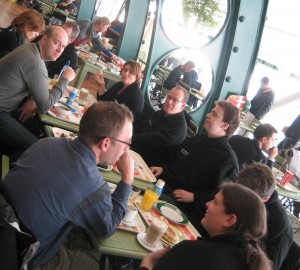This was written in response to a forum question, but I figured it might be useful for more people.
There are many ways to deploy ColdFusion code to a server. Probably the most prevalent, especially considering shared hosting, is using FTP to upload CFML templates to the server. Tools such as DreamWeaver and CFBuilder allow you to do so right from your IDE. Another way to do it is to run some Ant script or batch file and extract the sources straight from source control to the server. With a little bit of effort you get much more control and much more reproducible results. At Prisma IT we prefer to go a step further and deliver the ColdFusion applications we build as Enterprise ARchives (EARs) to our clients. This allows us even more control, especially when we don’t have any.
Let me explain that a bit. We have several clients where we do all their development, but final deployment is done on the clients infrastructure. If we are lucky, we may have read-only access to the User Acceptance Testing servers, but sometimes we don’t even have that. In those cases deploying an application is completely up to the client (or their hosting partner). That leaves us no wiggle room to deal with stuff that could go wrong during a deployment. With EAR files we eliminate a huge number of risks from the process. An EAR file is a full application, so there is no risk that some files get forgotten. And we have the MD5 to prove it. Since it gets deployed to its own temporary folder, there is no chance of any old files remaining on the server ans slipping in to the server (the cfclasses folder is famous for that).
The one thing you need to solve for this is how to configure your application. If the client had to log in to the ColdFusion Administrator after deploying the application to configure datasources, mappings etc., it would be just as easy to do something wrong. So what we do instead is to have the client place a properties file on the class path with a bunch of configuration settings. Standard ones, such as the IP address of the outgoing mail server and the folder for logfiles, and application specific ones such as the location on the SAN where all the documents are stored. Then in the onApplicationStart() the application parses that and configures itself. Each of these settings is checked when it is loaded into the application, so if there is a path configured, a directoryExists() wil make sure it actually exists.
The added benefit is that it becomes very easy to move an application around. Once you have written your properties files for test, QA and production, they stay the same. You just move an EAR file with a release from one environment to the next and it configures itself as soon as it starts. The EAR files themselves get generated by Ant on our build server to make sure they are completely reproducible. And to protect our intellectual property and deter others from mucking around in them, they only contain compiled source code. And since an EAR is a standard format, it works on different JEE servers too. (Mostly JRun and occasionally JBoss for us.)
As any solution, this process has downsides. Working with compiled EAR files is obviously not a good idea if you push small changes to a live server three times a day. It is a very ‘heavy’ process, because in each EAR you are packaging ColdFusion as well (100+ MB). And building EAR files without a ColdFusion Administrator does not just mean the client can not mess the configuration up anymore, it also means you can not fix the configuration anymore either. But all in all, it is serving us well.

